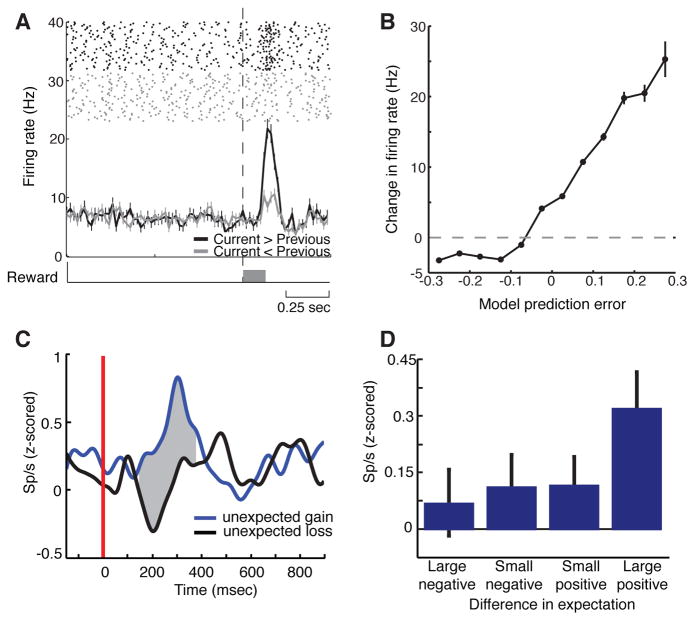Figure 6.
Dopaminergic responses in monkeys and humans. (a) An example dopamine neuron recorded in a monkey, which responds more when the reward received was better than expected. (b) Firing rates of dopaminergic neurons track positive reward prediction errors. (c) Population average of dopaminergic responses (n=15) recorded in humans during deep brain stimulation (DBS) surgery for Parkinson’s disease, showing increased firing in response to unexpected gains. The red line indicates feedback onset. (d) Firing rates of dopaminergic neurons depend on the size and valence of the difference between the received and expected reward. All error bars represent standard errors. Panels (a–b) reprinted with permission from Bayer and Glimcher (2005), and panels (a–b) reprinted with permission from Zaghloul et al. (2009).

